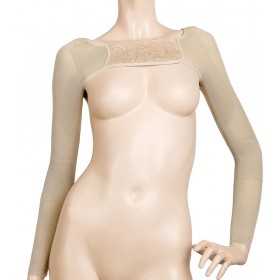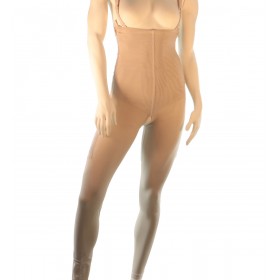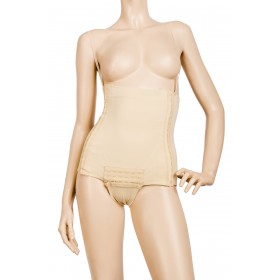What is liposuction?
Liposuction is one of the most common terms associated with cosmetic surgery. This procedure uses a high-pressure vacuum and a hollow instrument, called a cannula, to extract excess fat from the area of the body to be treated.
Facts about liposuction
Liposuction is one of the most popular cosmetic surgeries in the USA, and patients are spending $3,500 on average just for this procedure, according to American Society of Plastic Surgeons. As a result, approximately over 300,000 lipo procedures are done each year.
Here are some additional facts about lipo:
- This surgery is popular among women and men.
- Liposuction can be a limited procedure to extract fat from thighs, stomach or waist; or to shape the full body (body contouring).
- It is performed by a plastic surgeon.
- There are many types of liposuction techniques to extract fat. It is up to your plastic surgeon to choose the best technique to use.
- After liposuction, patient may experience at least one or more of the following common side-effects: pain, swelling, bruising.
- Post surgery full recovery may take up to few weeks, depending on which area of the body that has undergone a lipo procedure.
- It is a cosmetic surgery with subtle effects such as scarring.
- The procedure may be carried out with general or local anesthesia.
- In some cases, this cosmetic surgery can help to treat medical disorders such as lymphedema, gynecomastia, lipodystrophy syndrome, and lipomas.
Other names
Aside from calling it liposuction, some would also refer to it as:
- Lipo
- Lipectomy
- Lipoplasty
- Liposculpture suction
So next time you hear these terms, do take note that these refers to one and the same thing.
Benefits:
Liposuction is a procedure that helps to improve your body proportion and contours. It also reshapes and slims some areas of your body by eliminating excess body fats. However, there are instances wherein it is performed to help patients with the following illnesses and discomforts:
- Lymphedema, which is a long term or chronic condition that causes swelling or edema (excessive accumulation of lymph fluid in lymphatic vessels).
- Gynecomastia, also referred as man boobs, which is the excessive development of breast in males.
- Lipodystrophy syndrome.
- Obesity.
- Lipomas, or fatty and benign tumors.
Upper and lower body liposuction areas:
Liposuction or Lipoplasty eliminates discomfort due to excessive fat accumulation in the following body areas:
- Cheeks, chin and neck
- Upper arms
- Upper abdomen, flank or waist (love handles)
- Back and chest area (male breast reduction)
- Hips and buttocks
- Anterior, outer and inner thigh
- Knee
- Calf and ankle
Most common procedures:
The most common liposuction procedures are:
- Inner thigh liposuction
- Outer thigh lipo
- Abdominal liposuction
- Waist or love handles lipo
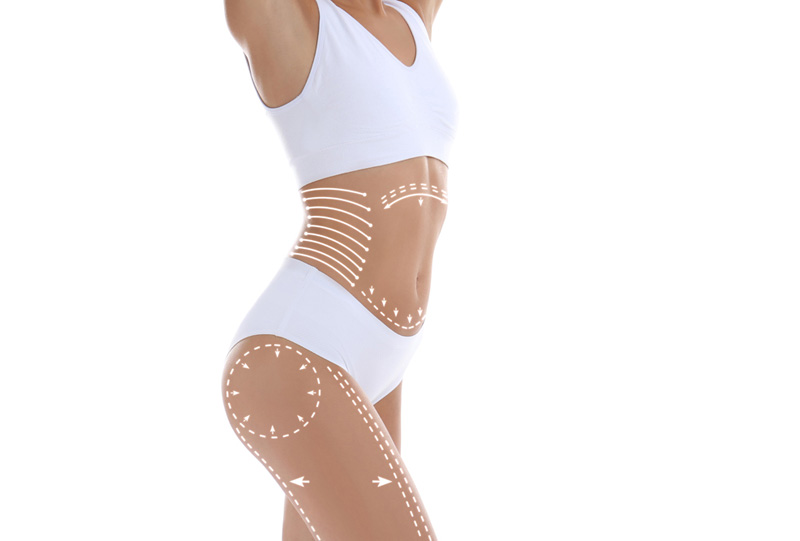
Arm lipo is also a very popular surgery.
Liposuction cost:
A very common question a patient would ask is: how much does liposuction cost? Well, Liposuction price would depend on the following factors:
- The body area involved in the liposuction.
- The type of liposuction technique used to extract fat. Laser liposuction is the most expensive liposuction method.
- A more subjective factor is the plastic surgeon experience and recognition among peers.
In the United States, the average cost of a liposuction procedure is about $3500 (source: American Society Of Plastic Surgeons). In Canada, based on prices posted by some surgeons on their website, a liposuction would cost $2500 and up.
Limits:
Although It is a fact that lipoplasty can eliminate fat, it however should:
- NOT to be a replacement for diet.
- NOT to be considered as an alternative for exercise.
- NOT to be use as remedy for obesity.
- NOT to be a treatment for cellulite or skin dimpling, especially in the pelvic region, lower limbs and the abdomen.
Thus, it is still best to follow the right diet and regularly perform exercise to keep your body in good shape and healthy.
Liposuction types (techniques):
There are different types of liposuction techniques. This include:
Tumescent liposuction
Tumescent Liposuction is the most common type of liposuction. This procedure uses liters of saline solution, anesthesia (lidocaine) and a vessel constrictor (epinephrine). This solution is pumped within the skin and is later sucked out via the use of small tubes.
Dry liposuction
Dry Liposuction is the removal of fat without any fluid injection. However, be prepared for a higher risk of bleeding and bruising. Thus, it is not commonly used today.
Ultrasound assisted liposuction (UAL)
UAL or Ultrasonic Liposuction uses the power of ultrasound and an energized cannula that melts the fat away within contact. The fat is liquified or emulsified, making it easier to be sucked out. It is through this ultrasound vibration method in which the walls of body fats are burst for easier suction. This type of lipo is very much suitable for male patients.
Powered liposuction
The Power Assisted Liposuction (PAL) utilizes a mechanized cannula that moves back and forth in fast motion. This makes the pulling out of fat faster and easier for the surgeons.
Laser Guided Lipo
This is less invasive compared to conventional liposuction procedure that needs the use of a tumescent fluid.
During the laser liposuction procedure, a little tube is inserted through an incision. This delivers the heat and laser energy to the fat beneath the skin. The small incision is left open after the lipo procedure so that the excess blood and body fluid will be drained out of the body.
Who are the most likely candidates?
According to American Society of Plastic Surgeons, a good candidate for liposuction surgery includes the following:
- Non-smokers.
- Adults with elastic, firm skin and fine muscle mass.
- A person who is in the 30% range of his or her ideal weight.
- Healthy people that do not have chronic diseases that can interfere with post surgery recovery.
So if you have extra fats which is very hard to be removed using physical exercise or diet, maybe you should try liposuction today.
How does liposuction work?
Before:
What you should ask or discuss with your plastic surgeon before your lipo?
Whether it is a thigh lipo, a waist or abdominal liposuction; before your surgery, when you are in a consultation, you should be ready to discuss the following subjects with your plastic surgeon:
- Your previous surgeries.
- The surgical goals you want to achieve after this lipo.
- Drug allergies.
- Which medications you take on a regular basis.
- Your overall medical condition.
- Tobacco use, alcohol consumption, drug use.
- Herbal supplements and vitamins.
In response, your surgeon will:
- Assess any risk factors or illness and your overall health status. At this stage, your doctor would determine if you are good candidate for a liposuction procedure.
- If your physical condition allows you to undergo the surgery, he will tell you how it works from A to Z.
- Discuss other options regarding liposuction.
- Recommend a course of treatment.
- Explain probable outcomes, risks or complications of the lipo surgery.
- Discuss with you about post surgery recovery process: recovery time, what you should do and not to do during recovery, what type of post surgical compression garments and how long you should wear them to recover after liposuction.
It is normal to feel excited or anxious. So don’t be shy in expressing these feelings with your surgeon!
Risk factors:
Just like any other surgical procedure, there are many risk factors you should consider before undergoing a liposuction. These include:
- Bruising
- Swelling
- Oozing liquid from the incision even after surgery
- Thrombophlebitis (vein blood clot)
- Contour irregularities due to weak skin elasticity. This can make your skin appear bumpy, wavy or withered
- Temporary numbness on the operated region
- Skin infection and burns
- Heart or kidney problems
- Pulmonary embolism and edema
- Allergic reaction to medication
Carefully choose an experienced and qualified surgeon to conduct your lipo procedure, and be sure to follow in details your doctor’s indications. This would help to reduce the likelihood of experiencing any of these risks partially or totally.
During: how is liposuction performed?
This is a step-by-step guide on how liposuction or lipoplasty is performed.
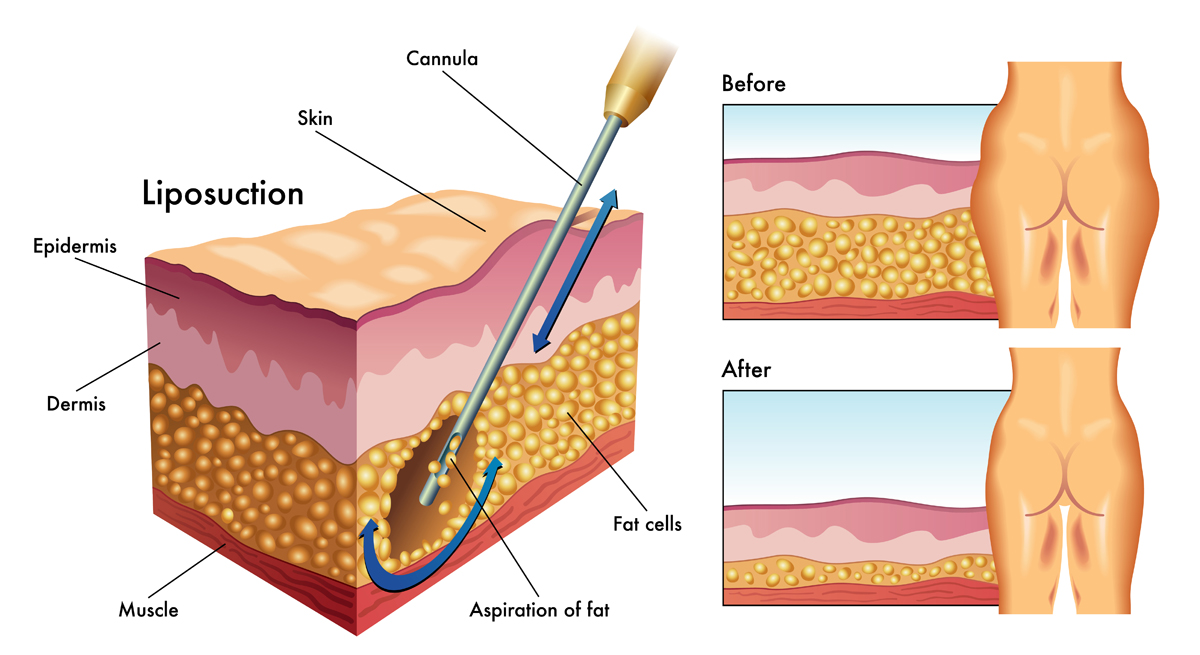
Step one: The Preparation
Medications such as intravenous sedation and anesthesia are administered to the patient.
Step two: The Surgery
A small incision is done. A thin and hollow tube is then inserted into the incisions to loosen the fats. This is controlled via a back and forth movement. The displaced fats are eventually sucked out of the body with the use of syringe that is attached to the cannula or surgical vacuum.
Step Three: Recovery and Results
When the liquid retention and swelling subsides during recovery period, your improved body figure post lipo will be apparent.
After: how to recover post liposuction?
Patients who have undergone general anesthesia generally spend the night in hospital. They may leave the hospital on the same date if they have undergone a local anesthesia. After which, your plastic surgeon may recommend the following during post liposuction recovery:
- Support bandages or post surgical compression garments after liposuction. They are worn to provide support and protection to the operated region of the body. These surgery garments also help to drain excess body fluid and to relieve swelling.
- Based on your surgeon recommendation, Antibiotics may be used to prevent infections.
- Painkillers like analgesics may be used to relieve inflammation and pain, if prescribed by your doctor.
If you experience any discomfort while recovering after liposuction, do not hesitate to inform your doctor about it as soon as possible.






